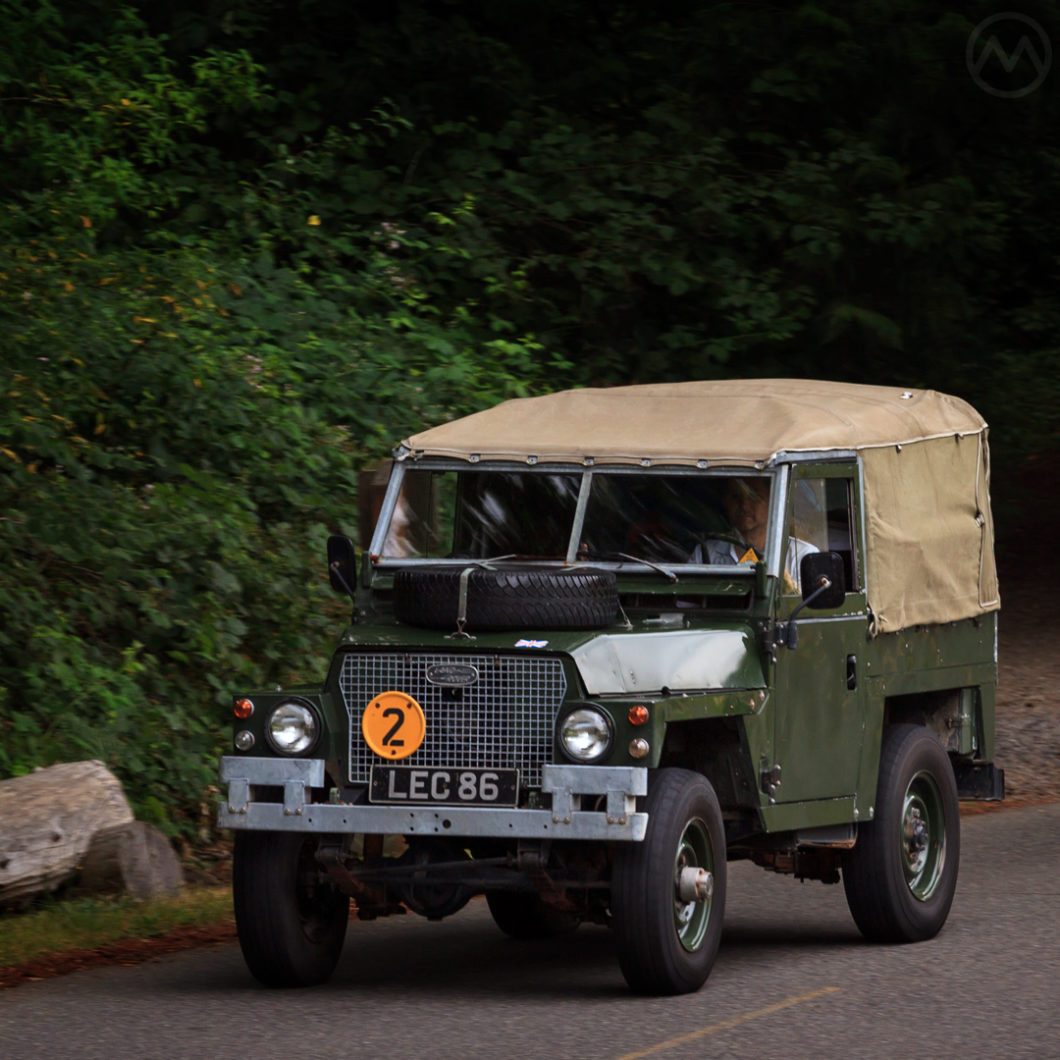It’s a Land Rover alright, but of a very particular kind – it’s called the “half ton lightweight,” although it’s actually not as light as the name or materials used would imply.
The story of the Land Rover half-ton lightweight begins with the Westlund Wessex, a derivative of the Sikorsky H-34 Helicopter. The half-ton lightweight was specifically created to be air-shipped and air-dropped by the Wessex and the Armstrong-Whitworth Argosy cargo plane.
It was meant for use in far-flung destinations like Borneo, where Commonwealth forces were involved in a three-year conflict with Indonesia during the truck’s development.
Though the lightweight probably wouldn’t have been a ton of use in Borneo, Land Rover and the Ministry of Defence had long wanted a vehicle that could be positioned by air – the Wessex made that possible, if difficult.
The regular 88” Land Rover SII was not a heavy vehicle, but army trucks required heavy batteries, larger tankage, and beefed up components – a military SII was well beyond the Wessex’s 2,500-lb. lift capacity. There was also no way to make the long-wheelbase Land Rover light enough to be lifted by the Wessex, so development had to concentrate on modifying the 88” truck.
Building the Lightweight
Starting in early 1965, work began in earnest on stripping down the 88 to the bare essentials for the mission. The British Ministry of Defense had some specific requirements beyond being able to be lifted by the Wessex. The standard Land Rover engine and gearbox had to remain, for commonality with the regular army Land Rovers, and the vehicle had to be small enough to fit in the Argosy.
The quarter-ton 88” Army SII was stripped down and rebuilt using only what was needed, and aluminum was substituted for steel where possible. A military vehicle, the “styling” was purely form-follows-function. It’s an odd looking vehicle but “boulevard cruisin’” was definitely not it’s raison d’etre.
For sizing on the airplane, the lightweight was 4” narrower, with redesigned axles and shorter half-shafts allowing it to fit on a standard pallet and minimal overhangs all around.
It came in at 2,650-lb., over the target, but by then the Wessex had gotten more power and lift. Many components of the lightweight were designed to be easy to remove and refit for air shipping, since at the time the truck was designed, the Wessex could only lift it if certain components were removed. In practice, most components stayed on all the time because of the increase in load capacity of the helicopter over time.
The trucks also weren’t air-shipped by the helicopter very often – even during the Falklands war, when the trucks were shipped this way sometimes, not very many were actually deployed using the helicopters.
Other Militaries & Replacement
From the prototype phase in 1966, the truck began production in the fall of 1968. At first, the SIIa “Airportable” was built only for the British armed forces, but the model continued with SIII updates in 1973, now being built for other militaries and locales (Belgium, Guyana, Holland, Jamaica, Libya, NATO, Saudi Arabia, Sudan, and notably both Indonesia and Brunei).
Production of the half-ton lightweight continued into 1984 and about 18,000 were made overall before being replaced by the Army variant of the Land Rover 90. Headlights migrated to the “wings” in 1970, and a chunky bumper marked out later cars, some of which were also powered by diesel fours.

